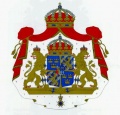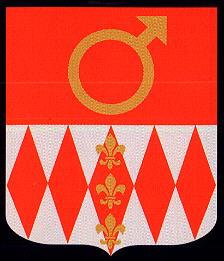Finspång: Difference between revisions
Knorrepoes (talk | contribs) m (Text replacement - "Literature :" to "'''Literature''':") |
Knorrepoes (talk | contribs) m (Text replacement - "===Origin/meaning===↵↵The" to "===Origin/meaning=== The") |
||
| Line 20: | Line 20: | ||
===Origin/meaning=== | ===Origin/meaning=== | ||
The arms were officially granted in 1944. The Iron Sign symbolises the Iron Works, the lower part is taken from the Arms of Louis De Geer, a Wallon imigrant.<br> | The arms were officially granted in 1944. The Iron Sign symbolises the Iron Works, the lower part is taken from the Arms of Louis De Geer, a Wallon imigrant.<br> | ||
In the Middle of the 17th Century He bought the Finnspång Estate, and begun a modernisation of the Iron Works beginning a nearly 200 year period of the Works. | In the Middle of the 17th Century He bought the Finnspång Estate, and begun a modernisation of the Iron Works beginning a nearly 200 year period of the Works. | ||
Revision as of 09:29, 4 August 2023
Sweden heraldry portal
This page is part of the Sweden heraldry portal |
Heraldry of the World |
|
Civic heraldry:
|
Other heraldry: |
FINSPÅNG
Province (Landskap): Östergötland, Närke
County (Län): Östergötlands län
Additions : 1942 Risinge; 1971 Hävla (1952 Regna, Skedevi), Hällestad
| Swedish |
Sköld delad av rött, vari ett järnmärke av guld, och silver, vari fem kopplade röda, genomgående spetsrutor, den mellersta belagd med tre stolpvis ordnade liljor av guld|- |
English | blazon wanted |
Origin/meaning
The arms were officially granted in 1944. The Iron Sign symbolises the Iron Works, the lower part is taken from the Arms of Louis De Geer, a Wallon imigrant.
In the Middle of the 17th Century He bought the Finnspång Estate, and begun a modernisation of the Iron Works beginning a nearly 200 year period of the Works.
Contact and Support
Partners:
Your logo here ?
Contact us
© since 1995, Heraldry of the World, Ralf Hartemink 
Index of the site
Literature: Nevéus and de Waern, 1992












